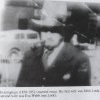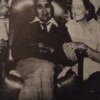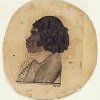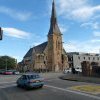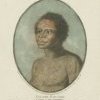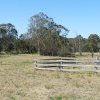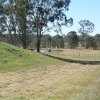1810s
1810
In February, Edward Luttrell Jnr, shoots Pemulwuy’s son ‘Tidbury’ (Tedbury or Tjedboro) in the face during an argument at Parramatta. In court evidence, botanist George Caley (Kaley) says he saw Tedbury remove a lead bullet from his mouth. Luttrell, who claims he thought Tedbury had speared his sister, is acquitted. Writing in later years, John Macarthur Junior thinks Tedbury died ‘a year or two afterwards’ from the effects of his wounds. (Sources: Rex v Luttrell, Court of Criminal Jurisdiction, Sydney, 13 March 1810, online at Macquarie Law. Linked with permission; Colonial Secretary, State Records, New South Wales (SRNSW) 5/1119-1; John Macarthur (Jnr), A few Memoranda respecting the Aboriginal Natives, MS A4360: 63, no date, ML.)
In July, Bundle (who in 1791, as an orphan boy, had accompanied Captain William Hill to Norfolk Island) assists district constable James Squire at Kissing Point (Ryde) by tracking footprints left by two nails in the sole of a shoe worn by an armed robber to Lane Cove. This is the first record of an Aboriginal tracker helping police.
1811
1814
60 Aboriginal people come to Parramatta to share in the annual feast. The Governor and his wife Elizabeth set up a school in Parramatta for the education of Aboriginal children. Macquarie specifically asks Captain Wallace who is part of the Punitive Expedition in Appin (see SouthWest) to bring back healthy children from the “dispersal”. Some Koori (Gandangarra) children are brought in after their families are massacred. After an appeal by Macquarie, six boys and six girls are given over in care to the Native Institute. Some are willingly handed over by their Koori parents.
The famous ‘Native Institute’ is thus established at Parramatta. Macquarie writes “It seems only to require the fostering Hand of Time, Gentle Means and Conciliatory Manners, to bring these poor Unenlightened People into an imported Degree of Civilisation.” Elders who agree to hand their children over probably do not understand that if they leave their children there, they will not be able to get them back.
Kitty is admitted to Parramatta Native Institution in 1814 at five years, of the Cannemegal (Warmuli) clan. An Aboriginal sailor, when asked why he preferred to rejoin his own people, said, when you keep me company, or when any white man or woman keep me company? White men will marry white men, but no white woman will have me; then why wish me to keep away from my own people, when no other will look upon me? (Sydney Gazette, 1/1/1814, in Brook, p. 10.)
With a view to improving conditions for the Aboriginal people, Macquarie established a "school for the education of the native children" under the management and care of William Shelly. NRS 1046 [SZ759, pages 11-14; Reel 6038]
Establishment of the Native Institution 1814 – Government and General Order Government House Sydney Saturday 10th December, 1814.
Civil Department - His Excellency the Governor having long viewed with sentiments of Commiseration the very wretched State of the Aborigines of this Country; and having resolved in his Mind the most probable and promising means of ameliorating their condition, has now taken the Resolution to adopt such measures as appear to him best calculated to effect that Object, and improve the Energies of this innocent, destitute and unoffending Race.
With this Anxiety to make one Experiment so interesting to the Feelings of Humanity, and to endeavour to ascertain how far the Condition of the Natives may be improved by the Application of such Means as are within his Power, His Excellency feels that he is making an Acknowledgement to which they are in some Degree entitled, when it is considered that the British Settlement in this Country, though necessarily excluding the Natives from many of the natural Advantages they had previously derived from the animal and other Productions of this Part of the Territory, has never met with any serious or determined Hostility from them, but rather a Disposition to submit peaceably to such Establishments as were necessarily made on the Part of the British Government on the Formation of this Settlement.
With a View, therefore, to effect the Civilization of the Aborigines of New South Wales, and to render their Habits more domesticated and industrious His Excellency the Governor, as well from Motives of Humanity as of that Policy which affords a reasonable Hope of producing such an Improvement in their condition as may eventually contribute to render them not only more happy in themselves, but also in some Degree useful to the Community, has determined to institute a school for the Education of the Native Children of both sexes and to assign a Portion of land for the Occupancy and Cultivation of adult Natives, under such Rules and Regulations as appear to him likely to answer the desired Objects, and which are now published for general Information. First, that there shall be a School for the Aborigines of New South Wales, established in theTown of Parramatta; of which His Excellency the Governor is to be Patron and Mrs Macquarie, Patroness. Secondly, That there shall be a Committee, consisting of seven Gentlemen, for conducting and directing the Institution; one of the Committee to act as Treasurer and Secretary. Thirdly, That the Institution shall be placed under the immediate management and care of Mr William Shelly as Superintendant and Principal Instructor. Fourthly, That the Main Object of the Institution shall be Civilization of the Aborigines of both Sexes. Fifthly, That the Expences of the Institution shall be defrayed for the first two years by Government, in such Manner as the Governor they deem expedient; but with a View to extend the Benefits of it after that period, that Subscriptions shall be solicited and received from public Societies and private Individuals.
Sixthly, That this Institution shall be an Asylum for the Native Children of both sexes, but no child shall be admitted under four, or exceeding seven years of Age. Seventhly, That the Number of Children to be admitted in the first Instance, shall not exceed six Boys and six Girls; which Numbers shall be afterwards increased according to circumstances.
Eighthly, That the Children of both sexes shall be instructed in common, Reading, Writing, and Arithmetic; That the Boys shall also be instructed in Agriculture, Mechanical Arts, and such common Manufactures as may best suit their Ages, and respective Dispositions; That the Girls Shall also be taught Needle-work. For all which Purposes, Instructors, properly qualified, will be employed. Ninethly, That the Manager or Superintendant shall have the immediate Care of the Children, the Purchase of Provisions, and of the Materials for employing them, together with the Disposal of the Articles manufactured by the Children. Tenthly, That a Portion of Land shall be Located for the use of adult Natives, which shall be be invited and encouraged to cultivate it and that such Assistence shall be rendered them for that Purpose by Government, as may be deemed expedient: That the Management and Superintend ance thereof shall be also vested in Mr Shelly; and under his immediate Inspection, subject to such Directions as he shall receive from the Committee.
Eleventhly, That the Committee shall meet Quarterly at the Town of Parramatta, on the first Wednesday in each succeeding Quarter, for the Purpose of inspecting and auditing the Quarterly Accounts of the Manager; and also of examining the Pupils as to their Progress in Civilization, Educa tion, and Morals; and how far the necessary Attention has been paid to their Diet, Health, and Cleanliness. That the Committee (which shall at no time consist of less than five members) shall have Power to take cognizance of and correct any existing Abuses, and frame such additional Regulations as may appear necessary for the Improvement and benefit of the Institution. Twelthly, That the Committee shall make a written Report of the Result of their Observa tions and Enquiries, at their Quarterly Meeting, to His Excellency the Governor, as a Patron of the Institution; and also of such Rules and Regulations as they may deem necessary to frame for the Benefit of the Institution; which must receive the Sanction of the Governor, previous to their being carried into Effect. Thirteenthly, That the proposed Institution shall be opened for the Reception of the PrescribedNumber of Children, on Wednesday the 18th Day of January next, being the auspicious Anniversary of the Birth of our Most Gracious Queen. Fourteenthly, That no Child, after having been admitted into the Institution, shall be permitted to leave it, or be taken away by any Person whatever (whether Parents or other Relatives) until such Time as the Boys shall have attained the Age of Sixteen Years, and the Girls Fourteen Years; at which Ages they shall be respectively discharged. Fifteenthly, The undermentioned Gentlemen having expressed their Willingness to forward and promote the Objects of the proposed Institution.
His Excellency is pleased to constitute and appoint them (with their own Concurrence) to be the Committee for Conducting and Directing All the Affairs connected therewith Committee 1. John Thomas Campbell, Esq 2. D’Arcy Wentworth, Esq 3. William Redfern, Esq 4. Hannibal McArthur, Esq 5. The Revd William Cowper 6. The Revd Henry Fulton 7. Mr Rowland Hassall His Excellency is further pleased to appoint John Thomas Campbell, Esq. to be Secretary and Treasurer of the Institution. By Command of His Excellency The Governor, (Signed) J T Campbell, Secretary.
From nsw state archives http://www.records.nsw.gov.au/state-archives/digital-gallery/lachlan-mac...
1815
The Parramatta Native Institute for Aboriginal Children has some fourteen students. It stands between today’s Macquarie, Marsden and Hunter Streets, and St John’s Church grounds. Among the promising children studying at the Native Institute is Maria, daughter of the Boorooberongal clan leader, Yellowmundee. Yellowmundee is a Darug name for a type of cicada. But Macquarie soon reports to London that, only two months after the establishment of the Native Institution, six children have already been taken away by their parents. (Macquarie to Lord Bathurst, HRA V111,p. 467.)
John Everingham a descendant of convict Matthew Everingham, is born. In adulthood . Later he lives with Mildred Saunders and has a son Ephraim Everingham, born 1855 in Wilberforce. He marries by Aboriginal rule at Sackville Reach. His wife is Martha Hobbs or Madha Hibbs of the Hawkesbury Tribe born 1846.
1816
Governor Lachlan Macquarie’s proclamation ends the ban on settlers associating with the Darug. Koori people begin to gather at properties of the settlers known to be friendly or safe, such as John Macarthur’s at Parramatta and Camden. He orders grants of land and seed “for wheat, maize, potatoes,” to Aborigines “as they are inclined to become regular settlers.”
Macquarie continues his military raids in the outer areas in the southwest. Every returning party brings back Aboriginal children, many of them of mixed descent, for the Parramatta school. He declares an amnesty for the rest of the ‘wanted’ warriors provided that they give themselves up before December. In December nearly 180 Aboriginal people appear in the Parramatta marketplace and sit according to tribes behind their chiefs as they do in the contests or fights. A number of children are taken into the Native Institution including 4 year old Dicky, the son of Bennelong.The long war in the Cumberland Plain is over.
Macquarie grants land to two adult Aborigines, Colebee and Nurragingy, also known as Creek Jimmy, for ‘fidelity to Government and their recent good conduct’ as native guides ‘to have and to hold forever’. Their land is on the Richmond Road, in today’s Plumpton. Nurragingy farms the land for a number of years. Macquarie also invests ‘Nurraginjy, alias Creek Jemmy, with ‘my Order of Merit' by presenting him with a handsome brass Gorget or Brest Plate, having his name inscribed thereon in full – as 'Chief of the South Creek Tribe’. (Quoted, M. Martin, On Darug Land. An Aboriginal Perspective, 1988, p. 80; see also P. Scarlett, The Lock family in World War One, Indigenous Histories 2008; Video, ‘Colebee’s land’
In April, Governor Macquarie orders Captain Schaw to deliver Aboriginal prisoners to the magistrates at Parramatta and to capture 12 Aboriginal boys and six girls, between four and six years of age, for the Native Institution at Parramatta. He instructs Schaw to ‘select and secure that number of fine healthy good-looking children from the whole of the Native Prisoners of War taken in the course of your operations, and direct them to be delivered to the Supt. of the Native Institution at Parramatta immediately on their arrival there.’ (Instructions for Capt. W.G.B. Schaw 46th Regt., CS Reel 6045, 4/1734:149-69, SRNSW; HRA Vol. 1X:858).
11 May: Macquarie promises to grant ‘small parcels of land to such of them [Aborigines] as are inclined to become regular settlers’. He promises Nurragingy and Colebee a joint grant of 30 acres at South Creek (now Blacktown). (Macquarie, Journal, 6 June 1816, A773:253, ML Macquarie awards a gorget to Nurragingy or Creek Jemmy, inscribed ‘Chief of the South Creek Tribe’. This is the second gorget given by Macquarie.) He sends two ‘fine boys’, Nalour and Doors, and two girls, Mybah and Betty, described as ‘Black Natives’ captured with the ‘Hostile Native Tribes’, to the Native Institution at Parramatta. They are next seen dressed in white and carrying bibles on display at the annual Native Feast. In November Mulgoa chief Mary-Mary brings in his daughter Judith (Judy) aged eight to Mrs Shelley to join the Native Institution.
1817
In January, Nurragingy (Creek Jemmy), chief of South Creek, and Mary-Mary, chief of the Mulgoa clan, with their families, totalling 51 men, women and children, visit Governor Macquarie at Parramatta. They are given breakfast and dinner in the Government Domain (Parramatta Park). Narrang Jack, a previously hostile Aborigine, gives himself up.
In February there are 20 children at the Native School. ‘I have been much delighted with having them read and spell - They read with so much boldness and attention as supprised [sic] me’, writes the Methodist missionary, the Reverend Samuel Leigh. (Source: Rev. Samuel Leigh, Sydney, 25 February, 1817, BT Box 50, ML.)
Near Portland Head (Wisemans Ferry) on the Hawkesbury River, the Methodist missionary Walter Lawry meets the chief of ‘a tribe of blacks’, but the women take their children and run off. Lawry writes: ‘I enquired why the children were carried off; they replied that many of them had been taken away by men in black clothes, and put to school at Parramatta, and they feared I was come on that errand’. (James Colwell, Illustrated History of Methodism, Sydney: William Brooks &Co., 1904:170-71.)











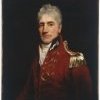
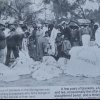
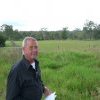
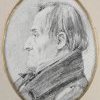
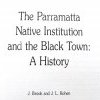

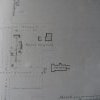
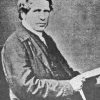
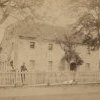
. Epraim Everingham and his wife Martha (Madha).thumbnail.JPG)
